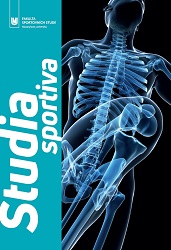Analýza efektu vysoce intenzivního intervalového tréninku (HIIT)
The analysis of the effect of high-intensity interval training (HIIT)
Author(s): Roman Kolínsky, Jan Cacek, Kateřina Strašilová, Jiří ZhánělSubject(s): Sports Studies
Published by: Masarykova univerzita nakladatelství
Keywords: aerobic/anaerobic endurance; EPOC effect; HIIT; training; lipid utilisation VO2 max
Summary/Abstract: The HIIT – High Intensity Interval Training has become an increasingly used term in foreign publications and this method is frequently implemented in training processes of many athletes. However not every athlete or trainer is aware of the physiological changes which are caused by this form of training. In order to improve the training process it is important to compare the effectiveness of HIIT with the continual training method or other forms of the interval training. The aim of this publication is to analyze and describe the effect of various forms of HIIT according to the set markers: primarily VO2 max (maximal oxygen uptake) – interval training effectiveness marker, secondarily lipid utilization, and last but not least hormonal and enzymatic level changes. Another objective of this publication is the clarification and explanation of energy coverage, metabolism and cardio-respiratory function during the application of HIIT method. Within the research plan we focused exclusively on the foreign studies (n = 150) conducted in years 1978–2015 from which we chose 70 studies from databases such as SportDiscus, Web of Science, ACSM Journal, PubMed. The selection was based on the preselected criteria – length of the research, nature of the research group and intervention frequency etc. For the purpose to extend the theoretical bases of the problematics of energy coverage, metabolism and cardio-respiratory function were analyzed several chosen studies from last 10–15 years. The analysis of the individual markers was conducted based on the publications from the last decade. The research has shown that the HIIT has a significant effect on the increase of VO2 max. Further findings also showed that the subject is able to adapt to this type of training in just two weeks which enables the duration of training process to shorten. This type of training also leads simultaneously with EPOC effect (post-exercise oxygen consumption) to higher energy consumption in tens of hours. The presented results can be used in Sports practice to overcome the performance stagnation and lead to performance improvement as a result of the HIIT method implementation. Certain studies show that the HIIT method is also successfully applicable to the overweight individuals, patients with Diabetes mellitus and people with sedentary lifestyle. However, it is always necessary to ensure the individual approach and to avoid the risk of overtraining.
Journal: Studia sportiva
- Issue Year: 11/2017
- Issue No: 1
- Page Range: 53-66
- Page Count: 13
- Language: Czech

